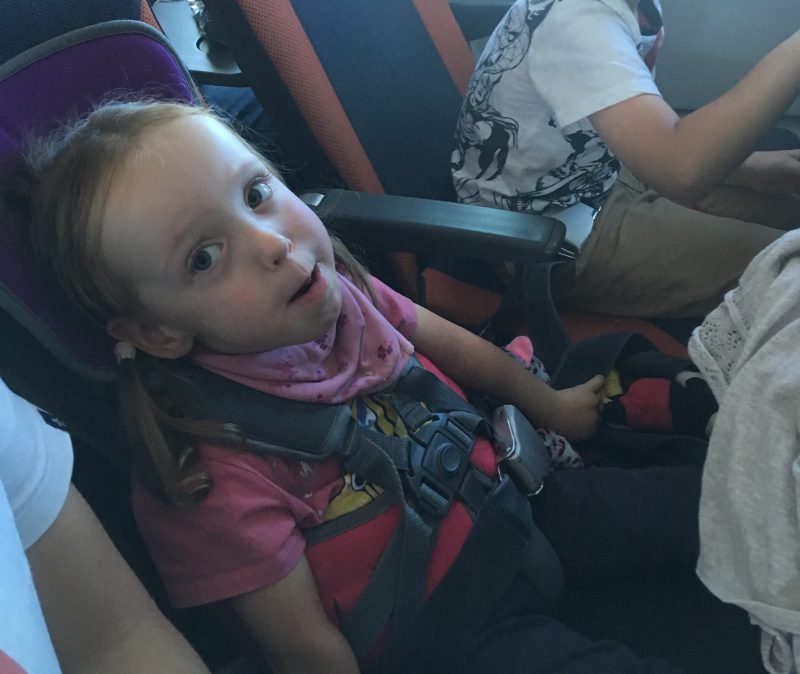I imagined going for walks in the park with our dogs, swinging on swings and sliding on slides, shopping for shoes and her first pair of earrings, and sharing my great love of horses and horseback riding with her.
I pictured braiding her hair and talking about boys, sipping cocoa and watching movies like The Lion King and Frozen, singing songs on the radio with her in the car. . .
She was perfect, and beautiful. Our lives would be perfect and beautiful too.
It was Not perfect when we got home – unless you wanted to call it a perfect nightmare. She didn’t sleep. She just didn’t. She spent the nights wailing and screaming inconsolably.
I spent night after seemingly endless night in tears as I carried her, patting her, rocking her, nursing her until she slept – only to lay her down and have the screams start again.
I didn’t know what to do. No one did. I assumed it was colic, changed her formula and tried every over the counter gas and colic relief I could find. Nothing worked. I resigned myself to suffering through it.
On top of everything else, she was a poor eater and scored “Failure to thrive” at her first checkup.
When she was 3 months old, my sister in-law noted that she wasn’t tracking. Fearing Hydrocephalus, we rushed her to the E.R.
The doctor there examined her, and ran a CT scan. He relieved us of that particular fear, only to tell us that there were other concerns. “Global Developmental Delay.”
Those three words were just the tip of the iceberg that would turn our normal world upside down. One doctor, referral and specialist after the other; each in turn left scratching their heads.
Was it Cerebral Palsy? For a time, it seemed this would be our diagnosis. I felt total dismay, but then a tiny sliver of hope.
After all, there were a few extraordinary individuals who overcame CP and lived full (if modified) lives. But one doctor wasn’t ready to assign this diagnosis. It didn’t quite “fit.”
So we were sent to yet another hospital, with more specialists, examinations, consultations and tests. Finally, full genetic testing was ordered.
As I had too many times before, I held down my hyper-flexible little girl as she screamed while vial after vial of her blood was drawn for testing. My heart tore for her. No child should suffer so much as this.
Eighteen weeks ticked by, suspending us in agony, leaving us victims of our imagination as we imagined the worst. Finally on a summer day in 2016, I got the call.
“We have a diagnosis.” My heart leapt with relief. Finally, we would have answers.
Finally, we might have a chance to cure her, to fix whatever was wrong.
At our consultation, the doctors seemed to struggle to explain what we were facing. ATP8A2 was something they had never encountered, or heard of, for that matter.
They could name it, and they could explain what happened, and even give us an approximate time frame of when it occurred, but there was No Prognosis.
No one could tell us how the combined deletion and mutation would impact her life, or if it would impact her life expectancy.
We were told that there were 6 other documented cases in the world at the time, but she was the Only One with her exact deletion/mutation combination.
The hardest news for me was that there was no cure, no experiments or medical study. I was beyond devastated. How could this be? What were we going to do?
Now she’s turning three. She’s lost the few words she had when she was not yet a year old, and she’s still unable to hold up her head, eat, roll over, crawl, sit, stand or walk.
She might never do those things. She loves to swing if she’s in our lap, but pony rides are still a distant dream. She has very poor vision, and not much patience for TV, let alone movies.
I’ve recently learned there are actually about 15 cases documented worldwide that are exactly like hers.
I’ve even been able to contact a few of the parents and I’ve learned that with one or two exceptions, our kids all exhibit the exact same symptoms. Hypotonia, Ataxia, Atrophy of the Optic Nerve, Myopia, Hyper-Gag Reflex, Non-verbal, Non-mobile. . . handicapped in every sense of the word.
One bright spot is that they understand everything. They can learn. They just can’t communicate.
As for my daughter, she’s a healthy, growing girl. She finds tremendous joy in the simplest things – like the breeze blowing through her hair.
She draws people to her wherever she goes with her happy smile, and love of attention. For as long as she lives, I will fight this condition.
I will fight to make her life the fullest, richest and happiest that I can. I will fight this with her, and for her. And perhaps we can help make a difference.
Perhaps, these other parents and I with our kids; can help turn the attention of the medical world to the plight of our children. Maybe – just maybe – there’s a cure to be found.
Certainly we can help bring global change to how the world views and understands Special Needs.
